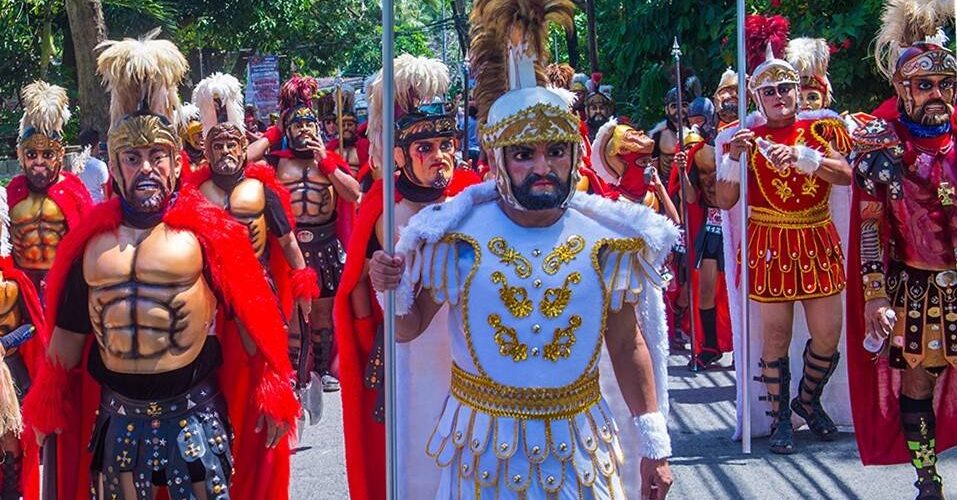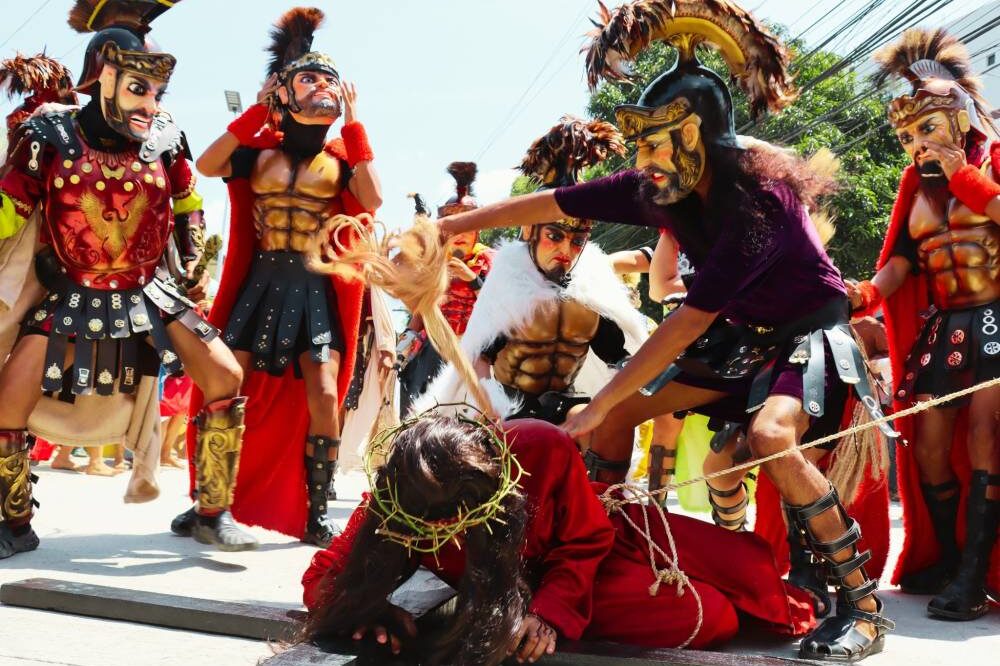
PASSION AND COLOR Marinduque’s Moriones Festival, a centuries-old reenactment of the Passion of Christ in the province, involves men and women parading around its towns during Holy Week, dressed in colorful costumes and masks—a parody of the Roman soldiers’ garb during the persecution of Jesus Christ. This photo was taken in 2022. —MARINDUQUE TOURISM AND CULTURAL OFFICE PHOTO
LUCENA CITY—In Marinduque, the so-called “Lenten Capital of the Philippines,” local and national government employees, schools and business establishments in the island province are being encouraged by the governor to wear Morion costumes as part of the observance of the province’s traditional Holy Week practices.
“In observance of the Lenten Season, all provincial, municipal, barangay officials, national government officials and employees, government-owned and controlled or corporations, private offices, public and private schools and colleges, establishments, government and nongovernment organizations are enjoined to wear caftan/Samaritana or Morion costumes during office days or holy week days from March 25 to 31,” Gov. Presbitero Velasco Jr. said in his Memorandum Order No. 2024-034 issued on Friday.
Velasco told the locals to show that they “truly cherish and value this significant and unique cultural and religious heritage” by donning the costumes and encourage their fellow Marinduqueños “to perpetuate our popular tradition.”
Marinduque, composed of six towns, is one of the country’s top destinations during the Lenten season. Holy Week is also a peak season for beach resorts, restaurants and local businesses in the province.
READ: IN THE KNOW: Marinduque’s Holy Week tradition
During Holy Week, the sleepy and rustic province comes to life with thousands of local visitors and foreign tourists coming to the island province to see one of the Philippines’ oldest religious traditions.
Marinduque’s Moriones Lenten rites are a Holy Week tradition centered on the reenactment of the passion and death of Jesus Christ. Devotees put on elaborately carved masks and colorful costumes to portray Roman soldiers and roam the streets from Holy Monday until Easter Sunday.

PENANCE Marinduque residents in costumes and masks act out the story of Jesus Christ’s crucifixion during the Good Friday Via Crusis in the capital town of Boac as part of the Moriones Festival in 2022. —PHOTO COURTESY OF THE MARINDUQUE TOURISM AND CULTURAL OFFICE
He also asked the public to participate in the community lantern parade and grand opening of the Marinduque Expo 2024, an agri-tourism trade fair, from March 25 until March 27.
Act of penance
Men and women called Moriones parade around towns during Holy Week, dressed in colorful costumes—a parody of the Roman soldiers during the time of Christ.
For the Moriones, the act of penance, thanksgiving or self-cleansing means enduring the hot costumes, hunger and thirst during the long walk around town.
After a long, humid day, they join the early evening religious procession on Holy Wednesday and Good Friday. Holy Week this year starts on March 24 (Palm Sunday) and ends on March 31 (Easter Sunday).
However, the Holy Week observance on the island does not only focus on the festival but also features traditional Lenten activities, such as the “pasyon” (chanting or recitation of the Passion of Christ), “cenaculo” (Lenten play), Visita Iglesia (church visits) and Via Crucis (Way of the Cross).
The festival started in 1807 to commemorate the crucifixion, death and resurrection of Jesus Christ. It also retells the story of Roman centurion Longinus, who pierced Jesus on the side but was miraculously healed when a drop of Christ’s blood fell on his blind eye.
For years, the festival drew millions of tourists from all over the world even during the height of the pandemic restrictions when it was celebrated, but with some movement and health restrictions in place. INQ

